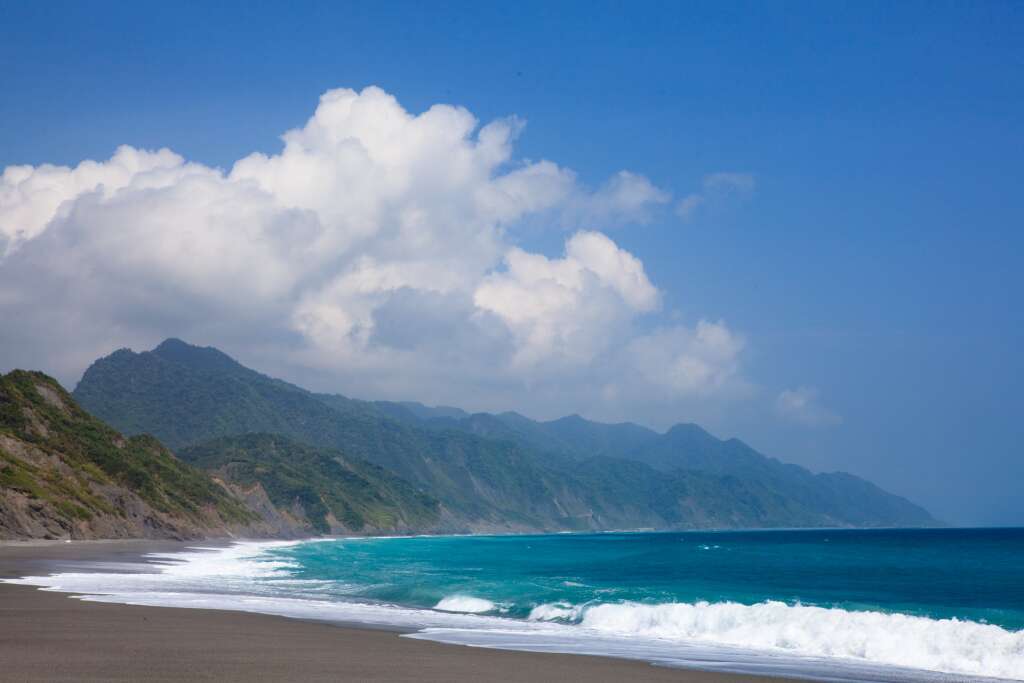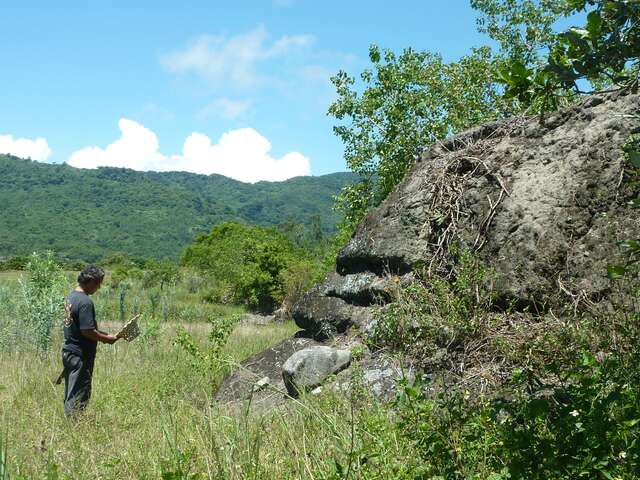Shuilian & Niushan
Updated:2024-11-20
Popularity
54529Fun activities
- Tread the waves and enjoy all kinds of beach activities
- In spring, you can see blooming Taiwan lilies covering the hill
- Camp on the beach and listen to the waves. Fall asleep watching the stars
- Enjoy the unique "singing" and "skin-changing" beach
Feature
- History and CultureHistory and CultureShuilian is the place where the Amis people lived for generations. As early as 3,500 years ago, ancestors of Jomon pottery culture lived here. The current Amis people successively migrated here about 80 to 90 years ago (the early years of Guangxu; 1875~) and lived on fishing, hunting, and farming in upland fields. During the Japanese rule and the early days after recovery, the Hakka people from Miaoli moved in while most of the Minnan people moved from the west after the August 7th floods in 1959. They reclaimed land in the mountains and planted fruit trees to make a living. There were also a small number of Sakizayas who fled to the East Coast to avoid the pursuit of Qing soldiers, and were taken in and protected by the Amis.
- Nature and EcologyNature and EcologyThe east coast of Hualien-Taitung is part of the Kuroshio waters, rich in migratory fish species, commercial fish species, and ornamental-aquarium fish species. The natural vegetation is mainly low-altitude secondary forests of Macaranga and Japanese Mallotus, and salt-resistant coastal plants. It is almost the archetype of the East Coast. The animal species include various butterflies, insects, amphibians, reptiles, birds, and mammals, among which there are many rare and precious protected species.
- Geological EnvironmentGeological EnvironmentThe rock formations in Shuilian Basin are mainly muddy shale, while the north coast is mostly conglomerates. Because the conglomerate is hard and the muddy shale is soft, the landscape presents itself as the former being high and the latter being low.
There are two beaches in this area. One is between Shuilian Village and Niushan (203 meters high); and the
other is located between the south of Niushan and hills (296 meters high) formed by volcanic clusters further south. - Observe the tropical rain forestObserve the tropical rain forestNiushan Conservation Zone is the area from Shuilian, Fanshuliaokeng, to Jiqi. As a tropical rain forest, the plants here are mainly large-leaved Nanmu and fig trees. Plank buttress and cauliflory can be seen here. Epiphytes in the forest are well developed. Lianas climb and tangle on the trees.
At the 27-km marker on Provincial Highway 11, you can see the totem of "Niushan Huting" on the left. Follow the narrow and curved path next to the viewing pavilion. With lush trees as thick shades, it is the best way to observe the tropical rainforest and the most convenient place for bird and insect watching. - A-Sheng Shuilian guava orchardA-Sheng Shuilian guava orchardShuilian is known for its produce of citrus fruits. The fruits are large, sweet, and delicious. There are also plums, peaches, pearl guava, red dragon fruit, and other fruits.
A-Sheng Shuilian guava orchard is located on Shuilian Mountain, secluded and quiet, and with a view of the sea in a distance. The owner, Mr. Huang Changsheng, carried out grafting experiments on various citrus fruit trees in the orchard, and planted camelia trees, Mrs. Huang is known for her cooking. If you make an appointment in advance and have ample time to stay, you will surely enjoy the local hospitality of Shuilian to the full.
Tel: 03-8602258
Address: No. 16, Beikeng, Shuilian Village, Shoufeng Township. - Huting Recreational AreaHuting Recreational Area"Huting" is the "place where cattle and sheep are grazing" in the Amis language. The local valley used to be the Amis prairie area. The business operator of Niushan Huting used driftwood collected by the sea to create artworks and placed them on the grasslands, adding an artistic and cultural atmosphere to Niushan.
The restaurant in area has driftwood tables and chairs. Amis ornaments are hanging on the walls. Drinks are made with screw pines, mimosa, and lilies; and lunch and dinner are authentic Amis dishes. Staying overnight at Huting, you can choose the driftwood B&B, or rent a tent to camp on the beach, watching the stars at night, listening to the waves, and feeling absolutely free. - Mizhan Old TrailMizhan Old TrailMizhan Old Trail was an important road for commercial transactions between the indigenous people and Han people on the East Coast in the early days. The villagers of Shuilian carried rice, salt, camphor oil and citronella oil over the Coastal Range on their shoulders to Mizhan Village. Then, they brought daily necessities such as soy sauce and sugar back to Shuilian along the Old Trail, creating the unique culture of porters on the Mizhan Old Trail.
This Old Trail is 6 kilometers long. The route was steep when it was first built. After renovation, the slope became relatively gentle, and it is maintained by residents of the Mizhan and Shuilian tribes. The Shuilian section has been converted into industrial roads, where cars can pass through. The Mizhan Village section remained the ancient state. After renovation, it becomes a hiking route suitable for all ages and is an excellent place for tourists and locals to hike. Especially in winter or spring, it is refreshing as the sunlight is not too strong. In summer, there are many birds and the whole line is mostly in the shades of trees, making it also a not too bad choice.
Details
Shuilian is situated on the coastal area of Shoufeng Township, Hualien County. It is in river valley basin surrounded by verdant hills through which Shuilian Creek flows down along the small path next to the main road. Shuilian wetlands and Niushan coast are like a hidden seaside paradise. In addition to water activities such as treading waves, beach activities, and fishing, this coast is rich in ecological resources. The coastal forests are a great place for observing ecology of the east coast, hiking, strolling, bird watching, and butterfly watching. Wandering on the vast coastal lawn to under the blue sky, clouds, and sunshine, time seems to freeze.

The origin of Niushan Huting
Niushan is located on the beach south of Shuilian. The Amis called it "Huting," meaning pasture with large grasslands. Niushan has a unique landscape, of which the most peculiar is the small leveled hills on the south bank that look like terraces. It was once a pasture area for buffaloes. In spring, blooming Taiwan lilies cover the hills. This place is called the origin of wild lilies. The flora of Niushan is rich, almost a miniature representation of the flora of the East Coast. It was included as a nature conservation zone in the Taiwan Coastal Reserve Plan in 1990.
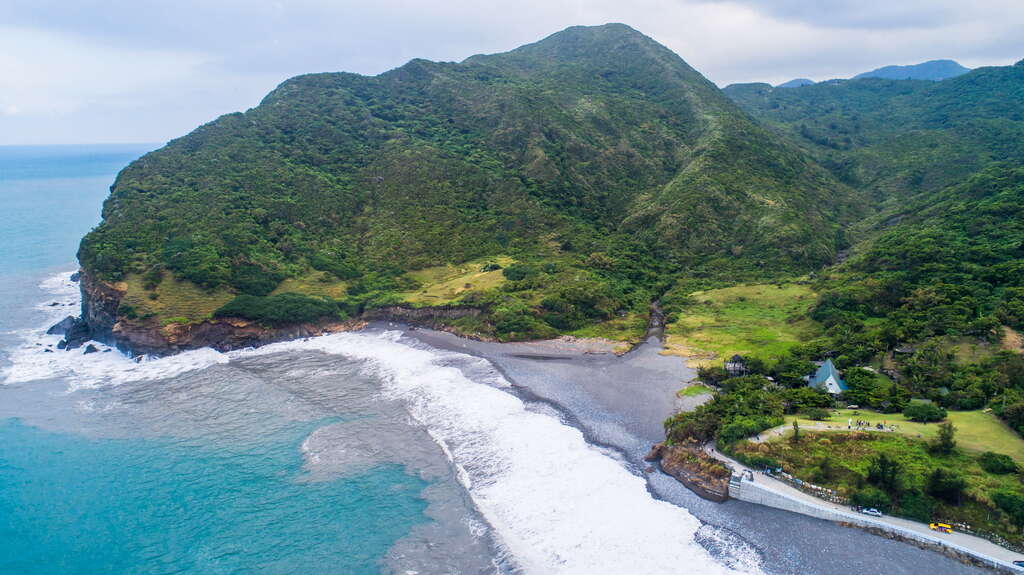
The singing beach in the winter, Shuilian Niushan—the skin-changing beach
In spring and summer, the beach is soft and gentle. Walking barefoot on the beach, with the sea breeze blowing gently, it would feel like you are in the "Cape Paradise," relaxed and comfortable. When the northeast monsoon arrives, after constant blowing of the wind, the fine sand is replaced by colorful pebbles of varying size, arranged in a certain order on the beach. When the waves come, the pebbles are pushed to the shore; and when the waves recede, the pebbles roll down along the slope of the beach, one by one, with sounds of high and low notes. Locals call this, the singing beach in winter Shuilian Niushan.
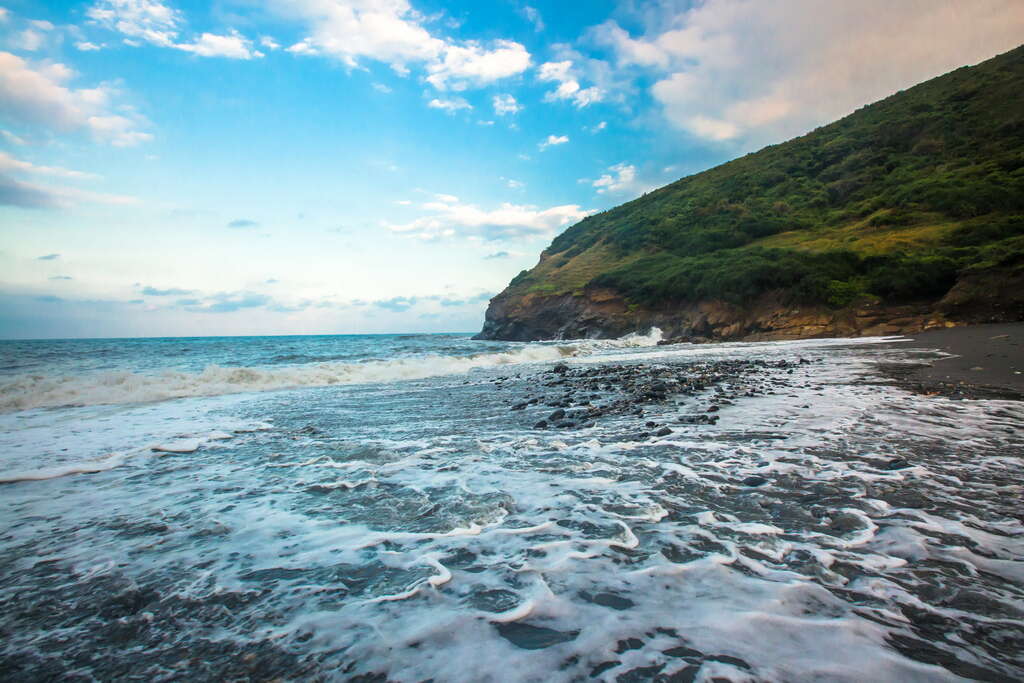
Leave your heart on the coastline—Starlight camping
There are also cabins in Niushan for basic accommodation, or you can choose to camp. Lying under the starry sky, with stars in your eyes, and falling asleep listening to the sound of the tide—you might accidentally leave your heart here on the coastline.
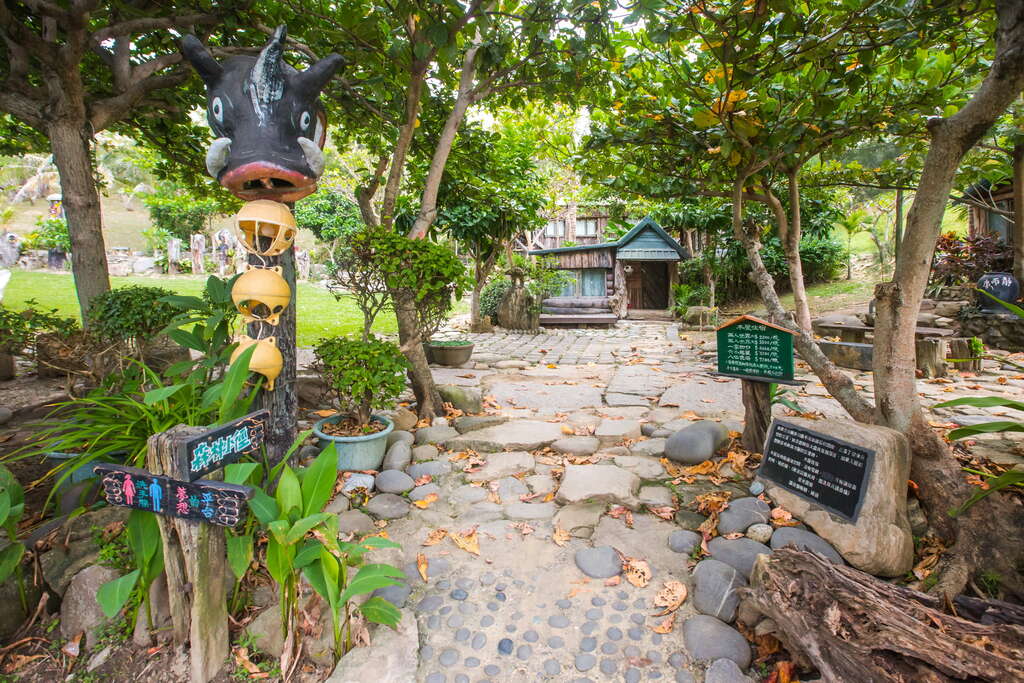

The origin of Niushan Huting
Niushan is located on the beach south of Shuilian. The Amis called it "Huting," meaning pasture with large grasslands. Niushan has a unique landscape, of which the most peculiar is the small leveled hills on the south bank that look like terraces. It was once a pasture area for buffaloes. In spring, blooming Taiwan lilies cover the hills. This place is called the origin of wild lilies. The flora of Niushan is rich, almost a miniature representation of the flora of the East Coast. It was included as a nature conservation zone in the Taiwan Coastal Reserve Plan in 1990.

The singing beach in the winter, Shuilian Niushan—the skin-changing beach
In spring and summer, the beach is soft and gentle. Walking barefoot on the beach, with the sea breeze blowing gently, it would feel like you are in the "Cape Paradise," relaxed and comfortable. When the northeast monsoon arrives, after constant blowing of the wind, the fine sand is replaced by colorful pebbles of varying size, arranged in a certain order on the beach. When the waves come, the pebbles are pushed to the shore; and when the waves recede, the pebbles roll down along the slope of the beach, one by one, with sounds of high and low notes. Locals call this, the singing beach in winter Shuilian Niushan.

Leave your heart on the coastline—Starlight camping
There are also cabins in Niushan for basic accommodation, or you can choose to camp. Lying under the starry sky, with stars in your eyes, and falling asleep listening to the sound of the tide—you might accidentally leave your heart here on the coastline.

Information
Open Time
/Always open.
Facilities
- Dining
- Stay
- Gas Station
- Parking lot
- View Point
- Trail
How to Get There
Choose a transportation method based on your departure location. Remind
1.The East coast of the stone, but please do not seized
2.Stack walking trail, remember m with a bottle of water to quench their thirst
2.Stack walking trail, remember m with a bottle of water to quench their thirst
